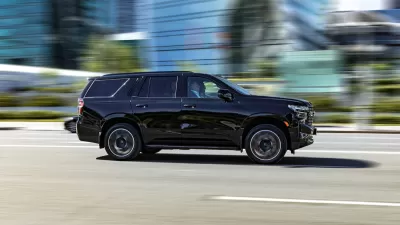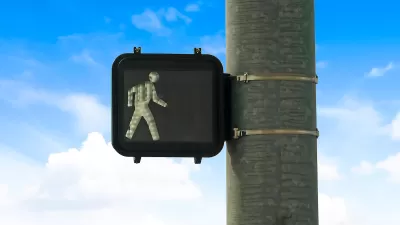Close to one fifth of pedestrian deaths in the United States happen on controlled-access freeways, suggesting a critical need for safety improvements on major roads.

“A surprising 17 percent of U.S. pedestrian deaths last year happened on roads where people theoretically should never be walking — and that troubling finding should prompt a conversation about why so many of them are doing it anyway,” writes Kea Wilson for Streetsblog. This data comes from an analysis by the Governors Highway Safety Association, which proposes that most pedestrians killed on freeways are stranded motorists, utility or construction workers, or first responders.
Research shows otherwise, writes Wilson. In fact, “a recent Insurance Institute for Highway Safety study found that just 18 percent of walkers killed on freeways between 2015 and 2017 were motorists whose vehicles had recently been disabled, and just 1 percent were road workers.” Most people killed on freeways were “people who chose to — or had no choice but to — walk on or near roads with vehicles traveling at speeds that will kill a walker nearly 100 percent of the time.”
“The question of why so many pedestrians are walking on roads that weren’t designed for them is hard to answer definitively, but experts say that their sheer prevalence of these deaths signals that they’re not just a horrifying anomaly.” The article cites the sheer prevalence of freeways in U.S. cities and the growing size of vehicles as two factors in rising death rates.
Jessica Cicchino of the IIHS says this signals a need for improved pedestrian infrastructure on or near freeways, many of which cut through urban neighborhoods indiscriminately, isolating residents from places they need to go. “That might look like installing pedestrian crossing bridges, overpasses, or underpasses at the site of frequent crashes, improving lighting along road shoulders to prevent the 48 percent of walking deaths that occur on unlit freeways after dark, or increasing access to transit so people on foot aren’t tempted to brave a dash across an interstate in the first place.
FULL STORY: Why Nearly A Fifth of Pedestrians Deaths Happen on Freeways — And How to Stop It

Planetizen Federal Action Tracker
A weekly monitor of how Trump’s orders and actions are impacting planners and planning in America.

Congressman Proposes Bill to Rename DC Metro “Trump Train”
The Make Autorail Great Again Act would withhold federal funding to the system until the Washington Metropolitan Area Transit Authority (WMATA), rebrands as the Washington Metropolitan Authority for Greater Access (WMAGA).

The Simple Legislative Tool Transforming Vacant Downtowns
In California, Michigan and Georgia, an easy win is bringing dollars — and delight — back to city centers.

The States Losing Rural Delivery Rooms at an Alarming Pace
In some states, as few as 9% of rural hospitals still deliver babies. As a result, rising pre-term births, no adequate pre-term care and "harrowing" close calls are a growing reality.

The Small South Asian Republic Going all in on EVs
Thanks to one simple policy change less than five years ago, 65% of new cars in this Himalayan country are now electric.

DC Backpedals on Bike Lane Protection, Swaps Barriers for Paint
Citing aesthetic concerns, the city is removing the concrete barriers and flexposts that once separated Arizona Avenue cyclists from motor vehicles.
Urban Design for Planners 1: Software Tools
This six-course series explores essential urban design concepts using open source software and equips planners with the tools they need to participate fully in the urban design process.
Planning for Universal Design
Learn the tools for implementing Universal Design in planning regulations.
Smith Gee Studio
City of Charlotte
City of Camden Redevelopment Agency
City of Astoria
Transportation Research & Education Center (TREC) at Portland State University
US High Speed Rail Association
City of Camden Redevelopment Agency
Municipality of Princeton (NJ)





























